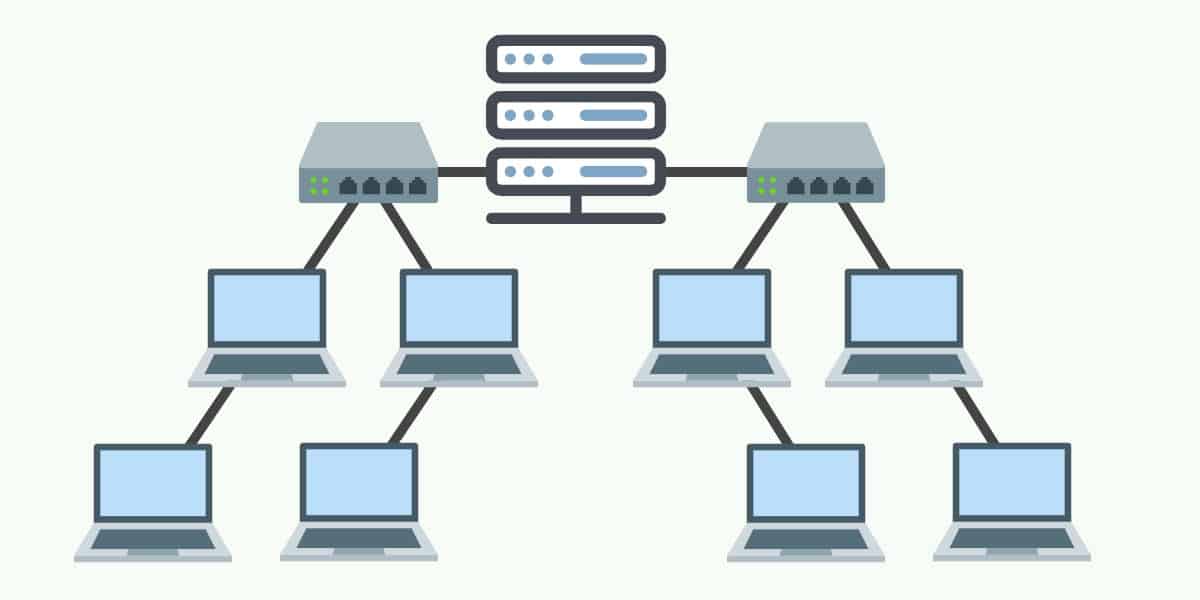Tree Topology

retrived from:https://www.comparitech.com/net-admin/network-topologies-advantages-disadvantages/
As the name suggests, a tree topology is a network structure that is shaped like a tree with its many branches. Tree topologies have a root node which is connected to other node hierarchy. The hierarchy is parent-child where there is only one mutual connection between two connected nodes. As a general rule, a tree topology needs to have three levels to the hierarchy in order to be classified this way. This form of topology is used within Wide Area Networks to sustain lots of spread-out devices.
Advantages
The main reason why tree topologies are used is to extend bus and star topologies. Under this hierarchical format, it is easy to add more nodes to the network when your organization grows in size. This format also lends itself well to finding errors and troubleshooting because you can check for performance issues systematically through the tree view.
Disadvantages
The most significant weakness of tree topology is the root node. If the root node fails then all of its subtrees become partitioned. There will still be partial connectivity within the network amongst other devices such as the failed node’s parent.
Maintaining the network is not simple either because the more nodes you add, the more difficult it becomes to manage the network. Another disadvantage of a tree topology is the number of cables you need. Cables are required to connect every device throughout the hierarchy which makes the layout more complex when compared to a simpler topology.
retrived from:https://www.comparitech.com/net-admin/network-topologies-advantages-disadvantages/
retrived from:https://www.comparitech.com/net-admin/network-topologies-advantages-disadvantages/
No comments:
Post a Comment